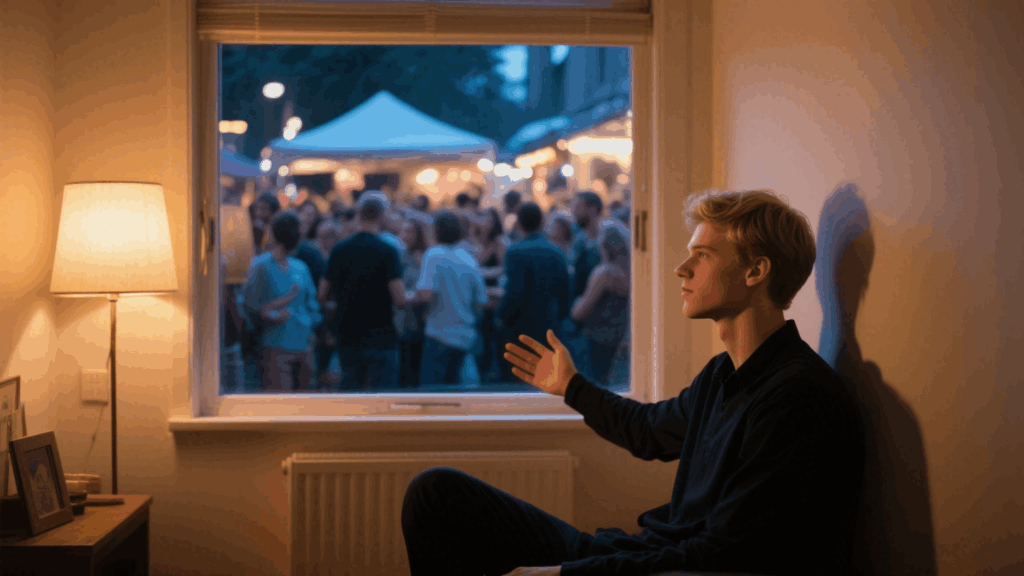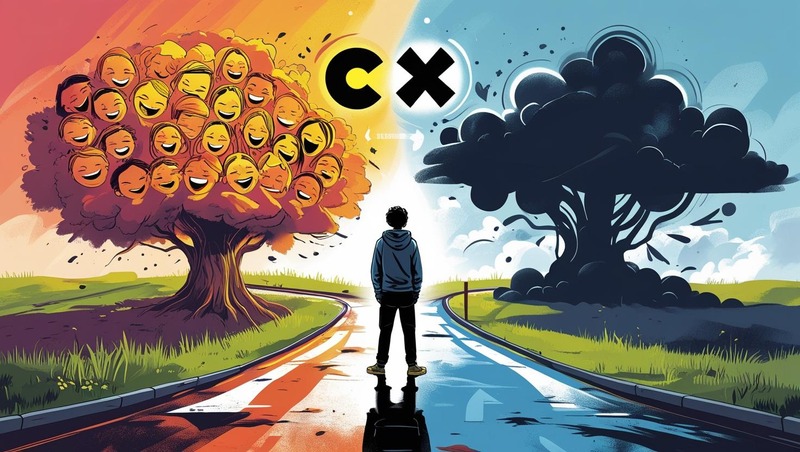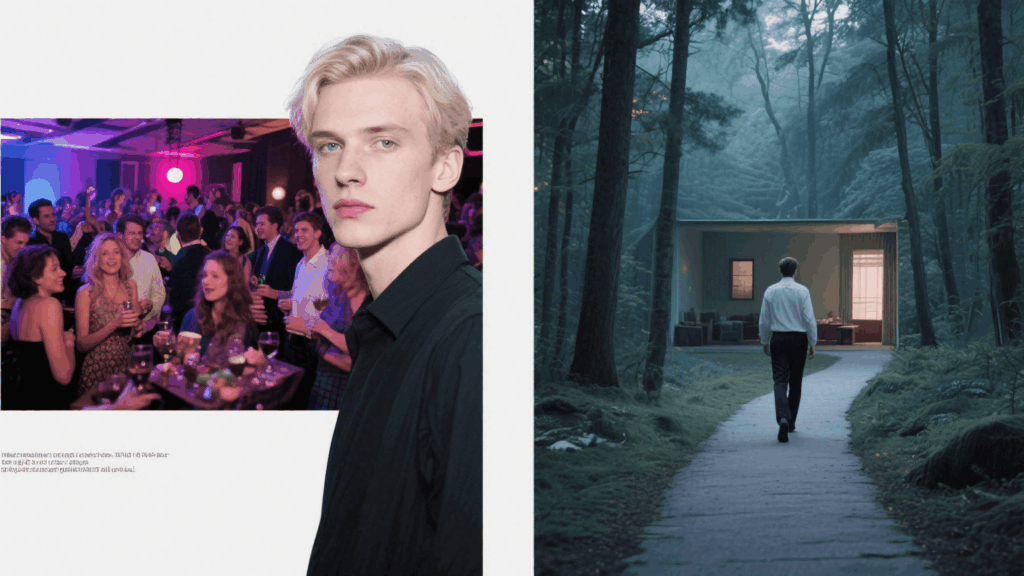Many individuals are privately struggling with an emotional inconsistency: they are afraid of social activities yet they are continuously experiencing the feeling of lack of someone around. This feeling is much more than just being an introvert or shy—an individual is dealing with a deeper psychological issue that resulted from his or her past experiences, as well as personality and cultural factors.
How is it possible for people to be afraid of contact and still be seeking it? What is the balance between being by yourself and having a natural human need for partnership? The goal of this essay is to guide you through this mental battle, expose the source, and come up with potential strategies to tackle it.

Why Avoiding Socializing Doesn’t Mean You Don’t Need Connection
It is a common misconception that by choosing to be alone, you’re not looking for mutual interaction at all, but this is definitely not the case. We are human after all, and that means we are interconnected beings by birth—our brains literally expand when in groups. However, to some, the thought of socializing instantly generates unrest instead of comfort.
The shunning doesn’t result from a lack of love for people in general. The act of retreat is usually precipitated by the following:
- Social anxiety: Fear of judgment, awkwardness, or rejection
- Emotional fatigue: Burnout from work, overstimulation, or past traumas
- Low self-worth: Belief that one’s presence doesn’t add value to others
- Negative past experiences: Bullying, toxic friendships, or betrayal
Here, the withdrawal was undertaken for self-protection. Nonetheless, the person being emotionally isolated is the biggest negative consequence, as he/she might feel more anxious, more depressive, and his/her mind will be filled with a negative self-image.
The Brain’s Role: Why the Pull and Push Happen Simultaneously
This paradoxical conduct is indeed neurologically grounded. The human brain processes socially rewarding stimuli (like laughter, validation, and touch) using the neurotransmitter dopamine. However, in individuals with social anxiety or traumatic experiences, the same conditions evoke sadness, grief, and other negative emotions of the amygdala—fear center in the brain.
The situations mentioned give rise to a duel of chemicals:
- Dopamine that craves human touch.
- Cortisol that perceives danger and loss of face.

In such a case, the same person who desires to be connected feels as if he or she is in an emergency and thus takes actions such as freezing, canceling plans, or toning down connections. Simultaneously, an individual may continue surfing on social media while not accepting an invitation wondering why.
The Rise of Digital Loneliness
Modern technology makes things worse as well. New tools such as Instagram or TikTok can bring the connection closer to us but often they do not provide emotional nourishment in the same way as face-to-face interaction does. More often than not, we confuse likes and messages with real interaction.
One could add to the virtual connection absence of:
- Eye contact
- Physical presence
- Shared silence and vulnerability
This loss results in the coined term “crowded loneliness”—the delivered interference is excessively high which creates an affinity for being physically isolated but presents as a crowded environment.
What is more, the awareness of others’ lives being nothing short of perfect can drive us even further to the end of the social line, imparting in us the “not enough” feelings (“I’m not good enough to belong there”) and increasing our level of loneliness.
Personality and Attachment Style Influence Everything
Our family background and psychological factory-setting determine our social behavio
Theory of Attachment in a Lifeworld
Those of you who experienced uneven support in the emotional aspect of your life as young people might have turned into either avoidant or anxious attachment styles.
- Avoidant individuals pull away and think that independence is more protectable.
- Anxious individuals long for complete intimacy yet are scared of being left alone, which leads to overthinking.
How to be friends or go out with an adult will often take the same form or shape as your attachment styles. You may find yourself in the situation when you are the one who cancels the weekend and other plans that you had high expectations. Or to intensify the suffering, you spend the evening repeating over in your mind the conversations of the event you eventually do not turn up for.
The Cult of “Sociability” and the Pressure of the “Traditional Unspoken Social Rule”
We live in a social system that values outgoing people. We are taught from a young age that the kid who talks the most and is charming is the one that goes far. A quiet person or someone who spends time in reflection is often mistaken for being disinterested or even weird.
As adults, this cultural expectation is still the same. These are the things people tell us:
- “You’ll never meet anyone if you stay home.”
- “You’re too young to be alone.”
- “You need to network to succeed.”
Thus, those who really treasure time spent alone or are in the process of improving from their emotional injuries are subjected to social pressure and guilt.
Staying Alone for Too Long May Become a Problem
Solitude can be very refreshing–however, the good part of it has its end. When it turns from being a chronic lifestyle, driven by fear, it might eventually lead to the deterioration of mental health.
The signs that you are entering the abyss of unhealthy isolation include the following situations:
- Your friends lose contact with you for weeks or months
- Each and every social invitation becomes a point that you ruminate on
- Feeling drained just after a minimal interaction
- Swapping meaningful conversation with infinite scrolling
That kind of seclusion not only does it give power to the idea that one is not mentally well, but it goes one better and makes a person feel undesired too.
Healthy Solitude vs. Lonely Avoidance
Differentiating healthy solitude from avoidant withdrawal is crucial:
Healthy SolitudeLonely AvoidanceRefuels energyMakes you feel tired, stressedHappens on purposeFeels like your only choiceIs a source of ideasGrinds your thoughts over and over again, therefore, causing more confusion and problemsStrengthens the sense of selfWeakening of social skills
The aim isn’t to overnight transform into a social butterfly but to figure out the type of aloneness that gives you strength and resilience.

Micro-Habits That Bridge the Social Gap
Having a sense of belongingness does not require you to attend overcrowded bars or take part in speed dating events. Start with small steps and progressively introduce small actions that push you beyond your comfort.
1. Say “yes” to low-urgency invitations
- Invite the friend for a coffee
- Promenade in the neighborhood
- Join online interest communities
2. Utilize text for keeping up with people
- React to the friend’s story
- Text a quick “how are you” to your friend
- You can share a meme or an article
3. Practice being in social spaces—without engaging
- Drink your coffee and work at a café
- Sit in the park for a while where you can see people
- Join a minimal talking yoga class
Each one of these micro-moments reinforces this sense of community and has the potential to be the very thing that helps people overcome their brain’s resistance to it.
Therapists are great at joining forces with you to figure a way out of your fears that snake around your social relations. When you are in that process, you may come across these things which are hidden at first but later pop up:
- Beliefs from the past (“I’m boring”) which have remained but are of no use to you any longer.
- Instances that happened long ago which make you continue with some of the behaviors you have been practicing up until now.
- Apractical tips to control sudden attacks of anxiety right on the spot you are standing on the soil.
Moreover, therapists can help you discover your personal social needs and how to satisfy them in the right way.
Reimagining Meaning of the Word “Contact”
It is not obligatory to stand in the middle of the crowd to become connected with other people. Describe what being in touch means for you differently:
- Enjoining a deep conversation with one person a week.
- Being involved in a common creative project.
- Help people in humble, but effective roles through volunteering.
Connection is not a matter of constant contact with somebody. It is that warm feeling of being visible and appreciated by someone even at the time when only one person is watching you.
What to Do When You Feel Lonely, but Don’t Feel Like Socializing
- Be clear about the conflict. You can say it directly or write it down: “I want to connect, but I still feel scared.” By mentioning it, you lower the strength of the coverage of this fear.
- Do one thing that nourishes you. Make a cup of tea, start journaling, or listen to a podcast that makes you feel connected and understood.
- Communicate passively. You do not have to start a long interaction. Just sending a text saying “I am thinking of you” counts.
- Organize future activities. Even if you are not able to talk now, setting a date leaves you something to expect.
Don’t forget your need for association is not something that makes you weaker and in a way that signifies you are a human.
If the shadow of isolation is a growing and unshakable presence in one’s life, it is advised to seek help. Psychological treatment could be especially helpful if you:
- Can’t recall the last time you were emotionally close to someone
- Feel constant anxiety about socializing
- Are not even participating in any online interaction
- Feel despair or very deep sadness
When it comes to obtaining support, doing so is not shameful. even a single therapeutic conversation can bring lots of relief.
The Middle Path: Balancing Alone Time and Community
The ideal thing to do is not to force yourself into situations that make you feel uncomfortable, nor should you shut down from other people completely as one would a computer. The way of the middle turns to a life that upholds your need for solitude as well as your need for a community.
Reflect on this every week:
- Have I been able to unite with anyone this week?
- Have I spent enough time by myself to recharge emotionally?
If you can give a positive answer to both questions, then you are keeping a good balance between preserving your well-being and nurturing your spirit.
Final Thoughts: You’re Not Broken
If you have ever said: ‘I don’t want to go out, but I feel so lonely,’ you are definitely not the only one. In fact, you are just human. We are truly living in a society that is fast-paced and seems to favor extroverts, thereby, it is quite perceptible to think that your emotional core is somehow damaged.
Actually, no, it isn’t.
By following the path of that voice in you which is all for solitude and the one that feels like meeting other people, you could learn to be peaceful and be with your tribe as well. With understanding, observation, and support, it is realizable to achieve life that balances both of your desires without compromising one.

There are times when your comfort zone can be a good place for you – a place where you can relax before you go further.